Papers by Ad van der Spek
Ocean & Coastal Management, 2022
NCK-days 2012: Crossing borders in coastal research: jubilee conference proceedings, 2012
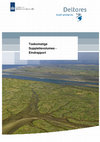
Dit onderzoek is een verkenning van het effect van mogelijke toekomstige morfologische ontwikkeli... more Dit onderzoek is een verkenning van het effect van mogelijke toekomstige morfologische ontwikkelingen aan de kust op de jaarlijkse suppletiebehoefte van de Nederlandse kust. De doelstelling van dit onderzoek is het verkrijgen van inzicht in de effecten van aannemelijke scenario's van kustontwikkeling in de komende eeuw op de functies van de kust, waarbij rekening wordt gehouden met de huidige ontwikkelingen van buitendelta's en de diepere onderwateroever, en een uitbouwend ondiep kustprofiel als gevolg van zandsuppleties sinds 1991. Hiertoe zijn de ontwikkelingen aan de kust over de afgelopen decennia geanalyseerd en geextrapoleerd tot 2035. Voor de ontwikkelingen tot 2100 zijn extremere morfologische scenario's toegepast. Daarnaast zijn de effecten van het stijgen van de zeespiegel meegenomen. Ongewenste effecten op de functies van de kust kunnen aanleiding zijn het jaarlijks suppletievolume te verhogen. Aan de hand van de verwachte ontwikkelingen voor 2035 en 2100 zijn...
71st EAGE Conference and Exhibition - Workshops and Fieldtrips, 2009
The coast of the Netherlands is dominated by barriers situated in front of a 50- to 100- km-wide,... more The coast of the Netherlands is dominated by barriers situated in front of a 50- to 100- km-wide, low-lying back-barrier area of heavily populated, reclaimed and cultivated tidal flats, estuaries and marshes. In the south, beyond Belgium, the barrier is connected to the mainland of Cap Blanc Nez of northwestern France. In the Netherlands, it follows the overall morphology of the Pleistocene subsurface as it connects the watersheds of the Late Weichselian drainage systems. Although the present morphology of the Dutch coast is strongly modified by tides and waves, first-order features, such as the change in strike from almost S-N in the west to almost W-E in the north, are completely defined by the Pleistocene morphology. Farther east, the barrier continues in German territory.
Ocean & Coastal Management
The way in which a coastal zone responds to a change in sea level depend on more than just the se... more The way in which a coastal zone responds to a change in sea level depend on more than just the sea-level fluctuation itself. Another important aspect, that is frequently overlooked, is the amount of sediment that is available for transport and sedimentation within the coastal zone. In addition, the increasingly large impact of human on coastal-zone evolution has to be taken into account when trying to predict future coastal response to sea-level change. In this paper, three periods of coastal evolution in The Netherlands are highlighted that are illustrative of the variable influence of changes in sea level, sediment availability and human impact on coastal evolution.
The Delft3D (v 6.02.13.7545M) modeling configurations used to investigate the impact of sea level... more The Delft3D (v 6.02.13.7545M) modeling configurations used to investigate the impact of sea level rise on the morphological evolution of intertidal shoals. Attached also is the Wadden Sea data (bathymetry and sediment composition).<br>
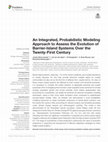
Frontiers in Marine Science, 2021
Barrier-island systems, spanning ∼7% of the world’s coastlines, are of great importance to societ... more Barrier-island systems, spanning ∼7% of the world’s coastlines, are of great importance to society because not only they provide attractive, liveable space for coastal communities but also act as the first line of defense from coastal storms. As many of these unique coastal systems are affected by both oceanic and terrestrial processes, it is necessary to consider the holistic behavior of applicable terrestrial and coastal processes when investigating their evolution under plausible future scenarios for climate change, population growth and human activities. Such holistic assessments, also accounting for uncertainties, can readily be achieved via reduced-complexity modeling techniques, owing to their much faster simulation times compared to sophisticated process-based models. Here, we develop and demonstrate a novel probabilistic modeling framework to obtain stochastic projections of barrier-island evolution over the twenty-first century while accounting for relevant oceanic and ter...
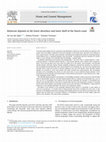
Ocean and Coastal Management, 2022
To further detail insights into the composition and distribution of Holocene and late Pleistoc... more To further detail insights into the composition and distribution of Holocene and late Pleistocene deposits at the surface and in the shallow subsurface of the lower shoreface of the Dutch coast, vibrocores were collected in three coastal sections. The study areas Noordwijk, Terschelling and Ameland Inlet represent contrasting settings:
closed Holland coast vs. segmented Wadden coast (Noordwijk – Terschelling) and lower shoreface of a barrier island vs. lower shoreface of an ebb-tidal delta (Terschelling – Ameland Inlet).
Six different depositional environments were distinguished: 1. the active layer, 2. seabed deposits, 3. lower-shoreface deposits, 4. ebb-delta channel deposits, 5. tidal channel deposits, and 6. alluvial (river) channel deposits. The several dm-thick active layer forms the mobile top of the seabed-, lower-shoreface- and ebb-delta channel deposits. Ebb-delta channel deposits (probably grading into terminal-lobe deposits) are restricted to the Terschelling and Ameland Inlet areas, fluvial deposits to the Noordwijk site. The front of the Ameland Inlet ebb-tidal delta is steep and consists of material supplied by the main ebb channel. These ebb-delta channel deposits are reworked by waves and currents, they grade seawards into seabed deposits. The low-gradient shoreface of the Terschelling site consists of a thin active layer on top of ebb-delta channel deposits. At the Noordwijk site fluvial deposits with incised bodies of tidal channel sand underlie a steep shoreface and a ridge-swale topography farther offshore.
The ebb-delta channel deposits at the shoreface of Terschelling are similar to those at the front of the ebb-tidal delta of Ameland Inlet. Moreover, the tidal channel deposits that are common in the Noordwijk area, occur in only one core at Terschelling. This indicates that the deposits underlying the shoreface of Terschelling were formed in the ebb-tidal delta of a precursor of Ameland Inlet and not in the transgressive setting of a retreating barrier island. These deposits were possibly formed as part of the ebb delta of the Middelzee, a large medieval predecessor of the Ameland tidal basin, this needs to be confirmed by dating.
Reworking of the shoreface of the prograded Subboreal beach barriers at Noordwijk at water depths of 12.5–13.5 m produced a 1.1-m-thick series of fining-upwards storm beds, including the active layer. At the shoreface of Terschelling storm beds are missing at these depths and only an active layer 0.2 m thick occurs. This suggests that the largest part of reworked sediment at Terschelling is carried off, which implies large-scale erosion of the shoreface. This needs further investigation.
Coastal Sediments 2019, 2019

Executive Summary Geoscientific contributions to infrastructural development in the Geologically ... more Executive Summary Geoscientific contributions to infrastructural development in the Geologically hazardous coastal environment at Lae in Papua New Guinea, are the subject of this joint Geological Survey of Papua New Guinea (GSPNG) / Coastal and Offshore Geoscience in East and South East Asia (CCOP) COASTPLAN study. The study of Natural Hazards in Lae, Papua New Guinea addresses the geological hazards that hinder the physical and economic growth of Papua New Guinea’s principal port and second city. Lae lies under the shadow of the Finisterre-Sarawaget range a steep and rugged range of mountains rising over 4000 metres and being pushed continually upwards by a collision between two major tectonic plates. This collision which involves both components of compression and strike-slip is the driving force and in many cases the triggering mechanism for a whole suite of geological hazards. These hazards not only effect the city of Lae but the communication links with the important highlands region. The CCOP COASTPLAN project demonstrates that geoscience has an essential role in planning and management of rapidly developing coastal areas. This study, one of three undertaken in East and Southeast Asia, considers the risks to people and property, and the constraints to development, from dangerous and damaging natural events, such as earthquakes, floods, landslides, tsunamis and coastal erosion. It has been a 15 month project, with COASTPLAN support of about $US 200,000. The study has been undertaken by geoscientists at Geological Survey of Papua New Guinea, assisted by special advisors. The project activities have included: • data compilation • new data acquisition • technology transfer and capacity building • information synthesis, identification of knowledge gaps • recommendations for future action to further define and reduce or mitigate risk. Recommendations for future activities to better understand and minimize the risks associated with each type of hazard include some of the following: • Earthquakes – carry out a detailed field survey of sediment and foundation conditions in Lae and surroundings to identify locations vulnerable to earthquake – microzonation, induced liquefaction and slope failure. • Floods – conduct an airborne video survey of the Markham, Butibum and Busu floodplains using state of the art methods as a new database for flood vulnerability assessment • Coastal land loss – reconstruct coastline behavior, past and present, and large scale erosion / sedimentation patterns from historical data • Landslides – Carry out an assessment of landslide hazard potential in the Atzera range and magnitude-frequency studies for landslide induced flood events in the Busu and other major river valleys. Landslide induced flooding has destroyed 5 bridges in the region since 1993 yet engineers continue to design bridges based on much smaller rainfall flood events • Submarine processes - measure the geotechnical properties of offshore sediments in situ in offshore boreholes in order to determine the potential for renewed slope failure under various conditions • Tsunamis – conduct field surveys to accurately locate potential inundation areas from different magnitude waves. It is perceived that many thousands of people in the coastal settlements and villages around Lae may be at risk In the preparation of this report it has become apparent that a detailed, comprehensive hazard zonation map of the Lae area is absolutely essential. • Hazard Map - The single most important recommendation is that a detailed map of the city and its surroundings is required. It should show elevation contours, slope angles, sediment types and properties, liquefaction and slope instability potential, floodplain limits, river channels, river erosion sites and coastal erosion and accretion sites and would provide basic information that would be useful to many people. The map would be zoned to indicate the key infrastructure and population centres that are vulnerable to different hazards as well as those areas are least vulnerable and therefore more suitable for future development. Two versions of the geological hazard map should be prepared – one using technical language and terms, aimed at planners and engineers: the another in plain language aimed directly the people of Lae, to improve their understanding and emergency response. A Tok Pisin version, the local Lingua Franca could also be published.
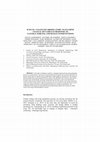
Coastal Sediments 2019, 2019
In the light of challenges raised by a changing climate and increasing population pressure in coa... more In the light of challenges raised by a changing climate and increasing population pressure in coastal regions, it has become clear that theoretical models and scattered experiments do not provide the data we urgently need to understand coastal conditions and processes. We propose a Dutch coastline observatory named ICON.NL, based at the Delfland Coast with core observations focused on the internationally well-known Sand Engine experiment, as part of an International Coastline Observatories Network (ICON). ICON.NL will cover the physics and ecology from deep water to the dunes. Data will be collected continuously by novel remote sensing and in-situ sensors, coupled to numerical models to yield unsurpassed long-term coastline measurements. The combination of the unique site and ambitious monitoring design enables new avenues in coastal science and a leap in interdisciplinary research.
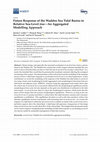
Water, 2019
Climate change, and especially the associated acceleration of sea-level rise, forms a serious thr... more Climate change, and especially the associated acceleration of sea-level rise, forms a serious threat to the Wadden Sea. The Wadden Sea contains the world’s largest coherent intertidal flat area and it is known that these flats can drown when the rate of sea-level rise exceeds a critical limit. As a result, the intertidal flats would then be permanently inundated, seriously affecting the ecological functioning of the system. The determination of this critical limit and the modelling of the transient process of how a tidal basin responds to accelerated sea-level rise is of critical importance. In this contribution we revisit the modelling of the response of the Wadden Sea tidal basins to sea-level rise using a basin scale morphological model (aggregated scale morphological interaction between tidal basin and adjacent coast, ASMITA). Analysis using this aggregated scale model shows that the critical rate of sea-level rise is not merely influenced by the morphological equilibrium and th...

Netherlands Journal of Geosciences, 2000
Flooding of the southern part of the North Sea occurred between 9000 and 8000 BP, when the rate o... more Flooding of the southern part of the North Sea occurred between 9000 and 8000 BP, when the rate of relative sea-level rise was on the order of 0.7 cm per year for the Dover Strait Region and 1.6 cm per year for the area north of the Frisian Islands, forcing the shoreline to recede rapidly. When relative sea-level rise decelerated after 7000 BP for the Belgian coast and 6000 BP for the central Netherlands coast, sediment supply by the tidal currents balanced the creation of accommodation space in the estuaries and other back-barrier basins. Consequently, the barrier started to stabilize, and the tidal basins and their inlets silted up. Between 5500 and 4500 BP, the Belgian coastal plain changed into a freshwater marsh with peat accumulation, and the same happened 500–1000 years later in the western provinces of the Netherlands. The E-W running barrier/back-barrier system of the Frisian Islands in the northern Netherlands stayed open until today, however, because of lower sediment sup...

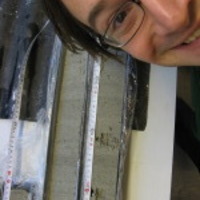








Uploads
Papers by Ad van der Spek
closed Holland coast vs. segmented Wadden coast (Noordwijk – Terschelling) and lower shoreface of a barrier island vs. lower shoreface of an ebb-tidal delta (Terschelling – Ameland Inlet).
Six different depositional environments were distinguished: 1. the active layer, 2. seabed deposits, 3. lower-shoreface deposits, 4. ebb-delta channel deposits, 5. tidal channel deposits, and 6. alluvial (river) channel deposits. The several dm-thick active layer forms the mobile top of the seabed-, lower-shoreface- and ebb-delta channel deposits. Ebb-delta channel deposits (probably grading into terminal-lobe deposits) are restricted to the Terschelling and Ameland Inlet areas, fluvial deposits to the Noordwijk site. The front of the Ameland Inlet ebb-tidal delta is steep and consists of material supplied by the main ebb channel. These ebb-delta channel deposits are reworked by waves and currents, they grade seawards into seabed deposits. The low-gradient shoreface of the Terschelling site consists of a thin active layer on top of ebb-delta channel deposits. At the Noordwijk site fluvial deposits with incised bodies of tidal channel sand underlie a steep shoreface and a ridge-swale topography farther offshore.
The ebb-delta channel deposits at the shoreface of Terschelling are similar to those at the front of the ebb-tidal delta of Ameland Inlet. Moreover, the tidal channel deposits that are common in the Noordwijk area, occur in only one core at Terschelling. This indicates that the deposits underlying the shoreface of Terschelling were formed in the ebb-tidal delta of a precursor of Ameland Inlet and not in the transgressive setting of a retreating barrier island. These deposits were possibly formed as part of the ebb delta of the Middelzee, a large medieval predecessor of the Ameland tidal basin, this needs to be confirmed by dating.
Reworking of the shoreface of the prograded Subboreal beach barriers at Noordwijk at water depths of 12.5–13.5 m produced a 1.1-m-thick series of fining-upwards storm beds, including the active layer. At the shoreface of Terschelling storm beds are missing at these depths and only an active layer 0.2 m thick occurs. This suggests that the largest part of reworked sediment at Terschelling is carried off, which implies large-scale erosion of the shoreface. This needs further investigation.
closed Holland coast vs. segmented Wadden coast (Noordwijk – Terschelling) and lower shoreface of a barrier island vs. lower shoreface of an ebb-tidal delta (Terschelling – Ameland Inlet).
Six different depositional environments were distinguished: 1. the active layer, 2. seabed deposits, 3. lower-shoreface deposits, 4. ebb-delta channel deposits, 5. tidal channel deposits, and 6. alluvial (river) channel deposits. The several dm-thick active layer forms the mobile top of the seabed-, lower-shoreface- and ebb-delta channel deposits. Ebb-delta channel deposits (probably grading into terminal-lobe deposits) are restricted to the Terschelling and Ameland Inlet areas, fluvial deposits to the Noordwijk site. The front of the Ameland Inlet ebb-tidal delta is steep and consists of material supplied by the main ebb channel. These ebb-delta channel deposits are reworked by waves and currents, they grade seawards into seabed deposits. The low-gradient shoreface of the Terschelling site consists of a thin active layer on top of ebb-delta channel deposits. At the Noordwijk site fluvial deposits with incised bodies of tidal channel sand underlie a steep shoreface and a ridge-swale topography farther offshore.
The ebb-delta channel deposits at the shoreface of Terschelling are similar to those at the front of the ebb-tidal delta of Ameland Inlet. Moreover, the tidal channel deposits that are common in the Noordwijk area, occur in only one core at Terschelling. This indicates that the deposits underlying the shoreface of Terschelling were formed in the ebb-tidal delta of a precursor of Ameland Inlet and not in the transgressive setting of a retreating barrier island. These deposits were possibly formed as part of the ebb delta of the Middelzee, a large medieval predecessor of the Ameland tidal basin, this needs to be confirmed by dating.
Reworking of the shoreface of the prograded Subboreal beach barriers at Noordwijk at water depths of 12.5–13.5 m produced a 1.1-m-thick series of fining-upwards storm beds, including the active layer. At the shoreface of Terschelling storm beds are missing at these depths and only an active layer 0.2 m thick occurs. This suggests that the largest part of reworked sediment at Terschelling is carried off, which implies large-scale erosion of the shoreface. This needs further investigation.